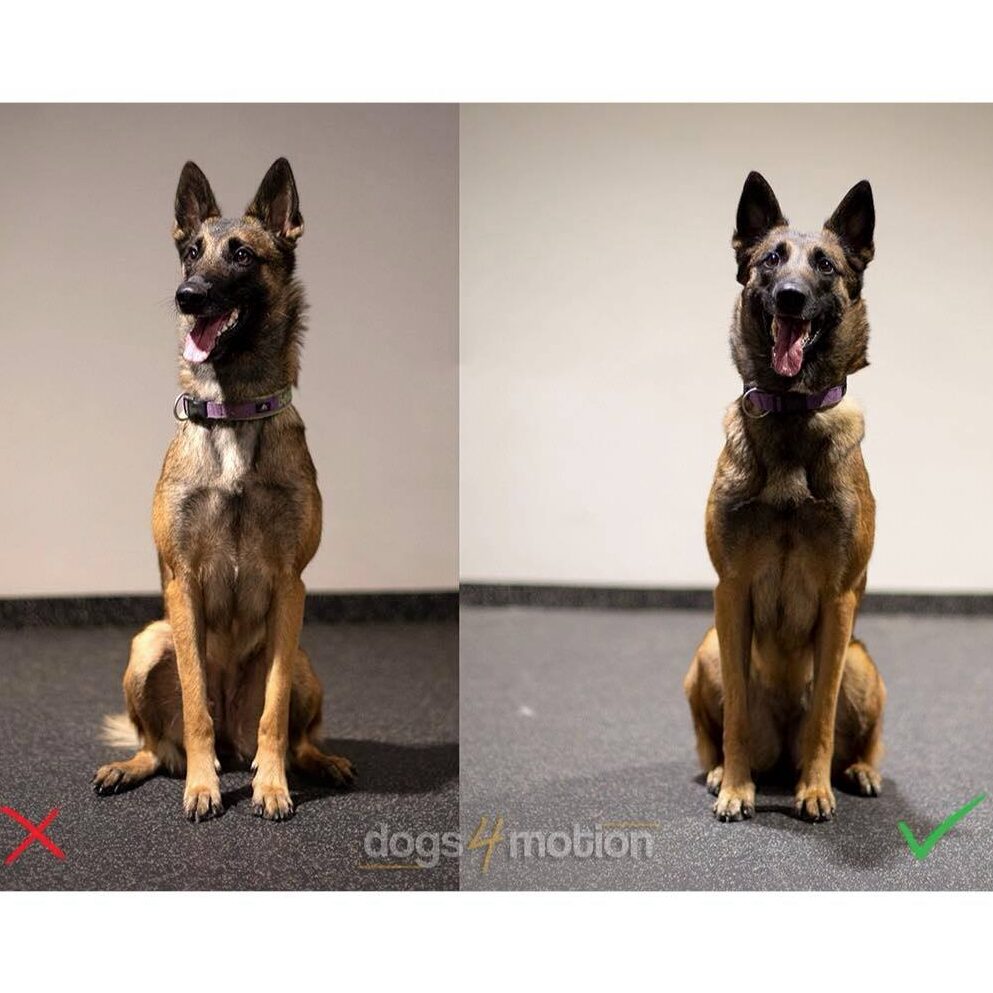Did you know a sit can tell us a story?!
Does your dog sit squarely, with hind legs “tucked in”, equal weight through the forelimbs with elbows tucked in and nice and straight through the back? Or do they sit with the hind legs rotated out so you can see the hind paws? Can they even sit at all? Do they sit with their hind legs totally to the side?

Incorrect sitting posture can be a sign of weakness and or pain and warrants being checked out by a therapist and/or vet. It may also be due to the dogs conformation making sitting difficult (such as for British Bulldogs) due to their wide hips and long femurs.

A change in sitting posture it also a key sign of pain! Certain conditions like cranial cruciate ligament rupture cause dogs to sit more on the non-painful limb, and cause the affected limb to “stick out” to take pressure off the affected stifle (Shaw, 2017). And hip dysplasia can cause them to sit with their hindlimbs splayed either side.
Simple exercises can improve core strength and limb stability to assist with correct sitting, however in reality a correct sit is not important, dogs are allowed to lounge about too! What is important what an incorrect sit can indicate if they don’t have the ability to sit correctly. By working on limb strength and core stability you can prevent issues later in life such as osteoarthritis.
Sit to stand exercises can improve strength and posture, and improve range of motion in the hindlimbs, thus preventing injury…but your dog MUST sit and push off correctly to do it (you can create a small space for them to sit in such as between the sofa and a box to encourage them sitting tucked in). Therefore it is a simple method to help them correct their sit if it is only you and your dog! They improve coordination through neuromuscular control, and build hindlimb musculature when performed correctly with the limbs tucked under the hindlimb during the sit (Drum, 2010; Shaw, 2017).
Sit to stand exercises have been used to support rehabilitation and strengthen the hindlimbs of dogs with conditions such as hip dysplasia, cranial cruciate ligament rupture, patella luxation, and intervertebral disc disease (IVDD). Specifically it has been found to improve hamstring and gluteal muscle activity which are imperative for hindlimb postural support and hip stability, as-well-as power production (Feeney et al. 2007).
Therefore key message is…teach your dog to sit, and sit correctly, it really will benefit them!
If you have any issues with getting your dog to sit correctly or are worried about their sitting posture, get in touch!

